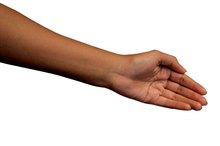What does fact checked mean?
At Healthfully, we strive to deliver objective content that is accurate and up-to-date. Our team periodically reviews articles in order to ensure content quality. The sources cited below consist of evidence from peer-reviewed journals, prominent medical organizations, academic associations, and government data.
The information contained on this site is for informational purposes only, and should not be used as a substitute for the advice of a professional health care provider. Please check with the appropriate physician regarding health questions and concerns. Although we strive to deliver accurate and up-to-date information, no guarantee to that effect is made.
Bicycle Seat & Nerve Damage
Like other forms of aerobic exercise, bicycling provides many health benefits. Unfortunately, your bicycle seat can cause pain and discomfort, possibly leading to nerve damage. Two factors that greatly influence your risk for developing nerve injury include the type of bicycle seat you use and the amount of time you spend riding your bike.
If you are experiencing serious medical symptoms, seek emergency treatment immediately.
Bicycle Seats
Also known as bicycle saddles, bike seats provide support and balance for your torso during seated rides. Traditional bicycle seats have noses, the narrow protrusion on the seat that extends toward the front of your bike. This small nose section can support 25 percent of your weight.
Nerve Damage
Testicle Damage From Cycling
Learn More
Riding for long periods can compress the nerves and blood vessels that run through your groin, leading to a decrease in blood supply to your genitals and a loss of sensation. DermNet NZ warns that repeated mechanical injury caused by prolonged sitting on bicycle seats can cause pudendal nerve entrapment syndrome, also called Alcock’s syndrome 1.
Symptoms
Compression of your pudendal nerve can cause chronic pain in your groin area, including your perianal, perineal and genital areas. It might be a burning pain and can include sensations that resemble an electric shock. With nerve damage, you also can experience deep aching pain, especially in response to physical stimulus. Other symptoms can include difficulty when starting to urinate, frequent urination, painful bowel movements, sexual dysfunction and numbness of the penis and impotence in men.
- Compression of your pudendal nerve can cause chronic pain in your groin area, including your perianal, perineal and genital areas.
- Other symptoms can include difficulty when starting to urinate, frequent urination, painful bowel movements, sexual dysfunction and numbness of the penis and impotence in men.
Prevention
What Causes Forarm Aches When Cycling?
Learn More
Overuse injuries, such as nerve compression, can occur in competitive cyclists and people who regularly ride bikes. The American Academy of Family Physicians recommends adjusting your bicycle seat to a maximum height that keeps you from rocking back and forth across the saddle as you ride 2. This should allow between 25 and 30 degrees of knee flexion on your extended leg when the peddle is at its lowest position. The Centers for Disease Control and Prevention recommends using a no-nose, or noseless, bicycle saddle to help prevent nerve damage 3.
Treatment
Treatment for nerve damage from bicycling depends on your specific condition and the extent of the damage. Your doctor might prescribe antidepressants, anticonvulsants or nerve stabilizers to help alleviate your neuropathic pain. Nerve blocks and steroid injections might help minimize pain and reduce swelling. Your doctor might suggest surgical decompression if other measures do not provide relief.
- Treatment for nerve damage from bicycling depends on your specific condition and the extent of the damage.
- Nerve blocks and steroid injections might help minimize pain and reduce swelling.
Related Articles
References
- DermNet NZ: Pudendal Nerve Entrapment Syndrome
- American Academy of Family Physicians: Bicycle-Related Injuries
- Centers for Disease Control: Using No-Nose Bicycle Saddles
- Kaur J, Singh P. Pudendal nerve entrapment syndrome. StatPearls. Updated June 21, 2019.
- Durante JA, Macintyre IG. Pudendal nerve entrapment in an Ironman athlete: a case report. J Can Chiropr Assoc. 2010;54(4):276–281.
- Antolak Jr SJ Pudendal Neuralgia: Pudendal Nerve Entrapment, Alcock Canal Syndrome, and Pudendal Canal Syndrome. Genitourinary Pain And Inflammation. Ed: Jeannette M. Potts. Humana Press, Totowa, NJ. 2008. pp 39-56.
Resources
Writer Bio
Laura Wallace Henderson, a professional freelance writer, began writing in 1989. Her articles appear online at Biz Mojo, Walden University and various other websites. She has served as the co-editor for "Kansas Women: Focus on Health." She continues to empower and encourage women everywhere by promoting health, career growth and business management skills.









